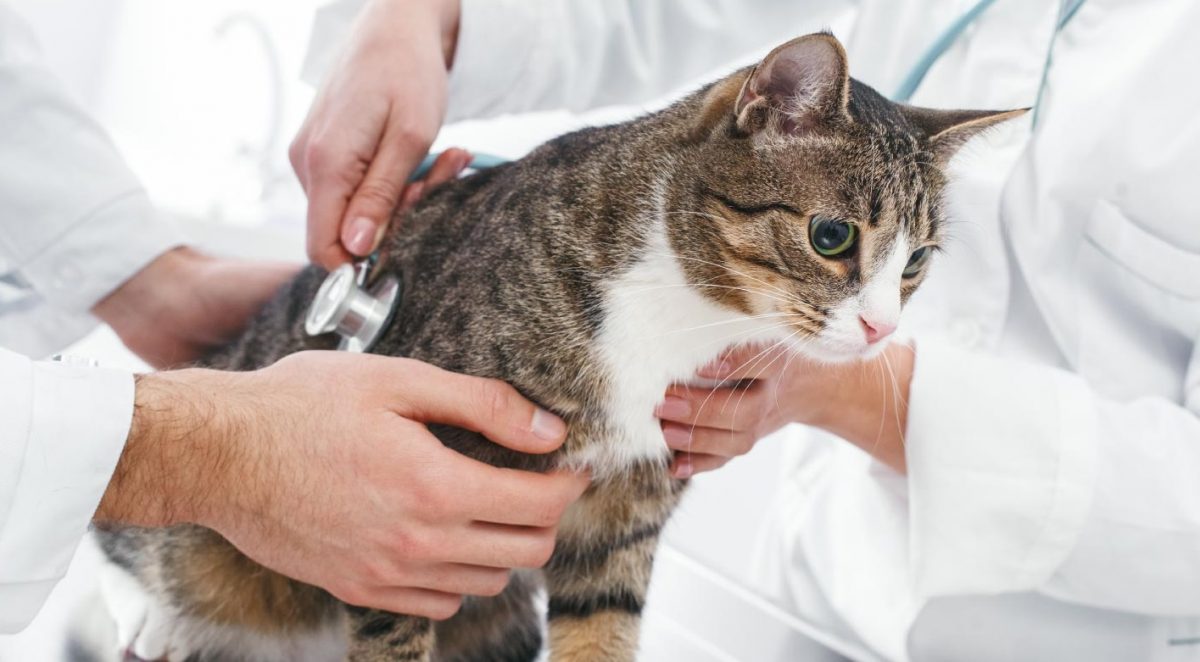Does your cat cough, wheeze and produce mucus from its nose? What many cat lovers don’t know is that cats are especially prone to respiratory problems. If it’s not recognized or not treated promptly, the result can be a bad case of pneumonia.
Yes, cats can get pneumonia. Unfortunately, many of the cat owners aren’t aware of these disease symptoms and just think that their cat has a food allergy. Speaking of food allergies, let’s check these signs of your cat has food allergies so you can differentiate the symptoms.
Pneumonia tends to be rare in healthy adult cats, but kittens and mature cats are at high risk. That’s because kittens and mature cats tend to have weak immune systems and are less effective at fighting the disease.
Some cases of pneumonia are complicated by multiple invading organisms. Viruses or fungi can do the initial damage, weakening the cat to a secondary bacterial infection. Here are some typical signs of pneumonia in cats:
• Difficulty Breathing and Shallow
This symptom also is known as dyspnea and can be a sign of various issues, including infection, trauma, and bleeding. Other reasons why a cat may be struggling to breathe include strange objects, heart failure, asthma, and pneumonia.
• Fast Breathing Rate
The normal breathing rate for cats is 20 to 30 beats per minute. Fast breathing in cats, also known as tachypnea, it could be a sign of low oxygen levels in the blood, (anemia), or asthma. This rapid breathing in cats may also be a result of fluid in the lungs due to heart failure and Pneumonia could also be the one of it.
- • Loss of Appetite
This sign is one of the key indicators that something is wrong with your lovely cat. So be sure to pay attention if your cat suddenly stops eating. Several different conditions may be responsible, including infections, kidney failure, pancreatitis, intestinal problems, cancer. and pneumonia
• Dry Cough, or a Wet Cough
If your cat has a wet cough, the coughing will produce phlegm or sputum4. This type of cough will sound moist and can be indicative of a lower respiratory problem.
• Fatigue
This sign can be a problem that makes your cat act completely different than usual. This condition is one that can cause problems like lack of appetite, changes in mood and behavior, and a lot of stress.
• A Cloudy Green or Yellow Discharge from the Nose
If your cat infection becomes worse which is the upper respiratory tract is affected, these symptoms can include a dry or ulcerated nose, brown eye, or nose discharge. In severe diseases, the deeper respiratory tract can become involved leading to pneumonia.
These signs can also be clues for other cat’s common diseases. So whenever your cat shows these signs, immediately visit the vet.
Usually, the vet will perform a physical examination and history, a diagnosis of pneumonia may include a complete blood count and chest x-ray. Once diagnosed, additional tests may also be recommended to help determine the underlying cause.
What Causes Pneumonia in Cats?
Pneumonia in cats is most often caused by viruses, bacteria, or fungi. Some cats with pneumonia may have multiple infectious organisms that contribute to this disease.
Also, there is one of the most common causes of respiratory problems in cats called Pleural Effusion, which is the accumulation of fluid in the pleural space around the lungs.
This fluid will put pressure on the lungs and stop them from filling up properly and this condition is seen more often in cats than in other animals.
This condition can also be caused by a stab wound to the chest when your cat fight with other animals. This can lead to the formation of pus in the lungs, known as an empyema or pyothorax.
- Can Pneumonia in Cats be Prevented?
While there is no universal way to prevent pneumonia in cats, there are ways to reduce the risk of this disease.
Make sure your cat is always getting vaccinated so that they stay healthy and protected. Cats that have received vaccines against calicivirus and herpesvirus have increased protection against developing viral pneumonia.
Since pathogenic bacteria are highly contagious, limiting contact between cats is also helpful. To reduce the risk of fungal pneumonia, you should bath your cat in the right way, stay indoors, and don’t let your cat escape from home to keep it away from dirty areas so they don’t come into contact with spores.

